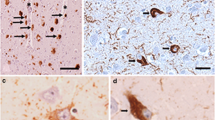Abstract
Cerebrovascular changes associated with Alzheimer’s disease (AD) can occur years before the onset of symptoms. Studies have suggested that changes in the retina may act as a surrogate for cerebrovascular changes in the brain, hence the retina might be a source of biomarkers for declining vascular brain health. Optical Coherence Tomography Angiography (OCTA) is a promising retinal imaging modality that has been increasingly used to investigate cerebrovascular diseases in this context. However, the potential clinical translation of advances for early AD detection is still being explored. In this study, we used OCTA retinal phenotypes to investigate differences between participants with and without a high genetic risk characterization of Apoliproprotein E4 (APOE4), and between participants with and without a family history of dementia. Furthermore, we investigated whether there is a difference in OCTA retinal phenotypes between participants with and without a high CAIDE (Cardiovascular Risk Factors, Aging, and Dementia score). This investigation explored retinal phenotypes (from OCTA) both cross-sectionally and longitudinally (2 years follow-up) using participants at mid-life from the PREVENT cohort and our findings suggest that there are retinal vascular changes captured in OCTA images between control and participants at risk of developing AD.
Access this chapter
Tax calculation will be finalised at checkout
Purchases are for personal use only
Similar content being viewed by others
References
Ali, N., et al.: Clinical validation of the RTVue optical coherence tomography angiography image quality indicators. Clin. Exp. Ophthalmol. 48(2), 192–203 (2020)
Benjamini, Y., Hochberg, Y.: Controlling the false discovery rate: a practical and powerful approach to multiple testing. J. Roy. Stat. Soc.: Ser. B (Methodol.) 57(1), 289–300 (1995)
Blennow, K., Mattsson, N., Schöll, M., Hansson, O., Zetterberg, H.: Amyloid biomarkers in Alzheimer’s disease. Trends Pharmacol. Sci. 36(5), 297–309 (2015)
Cortes-Canteli, M., Iadecola, C.: Alzheimer’s disease and vascular aging: JACC focus seminar. J. Am. Coll. Cardiol. 75(8), 942–951 (2020)
Criscuolo, C., et al.: Assessment of retinal vascular network in amnestic mild cognitive impairment by optical coherence tomography angiography. PLoS ONE 15(6), e0233975 (2020)
Elahi, F.M., et al.: Retinal imaging demonstrates reduced capillary density in clinically unimpaired APOE \(\varepsilon \)4 gene carriers. Alzheimer’s Dement. Diagn. Assess. Dis. Monit. 13(1), e12181
Exalto, L.G., Quesenberry, C.P., Barnes, D., Kivipelto, M., Biessels, G.J., Whitmer, R.A.: Midlife risk score for the prediction of dementia four decades later. Alzheimer’s Dement. 10(5), 562–570 (2014)
Giarratano, Y., et al.: Automated segmentation of optical coherence tomography angiography images: benchmark data and clinically relevant metrics. Transl. Vis. Sci. Technol. 9(13), 5 (2020)
Giarratano, Y., et al.: A framework for the discovery of retinal biomarkers in optical coherence tomography angiography (OCTA). In: Fu, H., Garvin, M.K., MacGillivray, T., Xu, Y., Zheng, Y. (eds.) OMIA 2020. LNCS, vol. 12069, pp. 155–164. Springer, Cham (2020). https://doi.org/10.1007/978-3-030-63419-3_16
Guerreiro, R., Bras, J.: The age factor in Alzheimer’s disease. Genome Med. 7(1), 1–3 (2015)
Hui, J., Zhao, Y., Yu, S., Liu, J., Chiu, K., Wang, Y.: Detection of retinal changes with optical coherence tomography angiography in mild cognitive impairment and Alzheimer’s disease patients: a meta-analysis. PLoS ONE 16(8), e0255362 (2021)
Jack, C.R., et al.: A/T/N: an unbiased descriptive classification scheme for Alzheimer disease biomarkers. Neurology 87(5), 539–547 (2016)
Jack Jr., C.R., et al.: NIA-AA research framework: toward a biological definition of Alzheimer’s disease. Alzheimer’s Dement. 14(4), 535–562 (2018)
Janeiro, M.H., et al.: Biomarkers in Alzheimer’s disease. Adv. Lab. Med./Avances en Medicina de Laboratorio 2(1), 27–37 (2021)
Khoury, R., Ghossoub, E.: Diagnostic biomarkers of Alzheimer’s disease: a state-of-the-art review. Biomark. Neuropsychiatry 1, 100005 (2019)
Kivipelto, M., Ngandu, T., Laatikainen, T., Winblad, B., Soininen, H., Tuomilehto, J.: Risk score for the prediction of dementia risk in 20 years among middle aged people: a longitudinal, population-based study. Lancet Neurol. 5(9), 735–741 (2006)
Liu, C.C., Kanekiyo, T., Xu, H., Bu, G.: Apolipoprotein E and Alzheimer disease: risk, mechanisms and therapy. Nat. Rev. Neurol. 9(2), 106–118 (2013)
López-Cuenca, I., et al.: The value of oct and octa as potential biomarkers for preclinical Alzheimer’s disease: a review study. Life 11(7), 712 (2021)
Ma, J.P., et al.: Longitudinal analysis of the retina and choroid in cognitively normal individuals at higher genetic risk of Alzheimer disease. Ophthalmol. Retina 6, 607–619 (2022)
O’Bryhim, B.E., Apte, R.S., Kung, N., Coble, D., Van Stavern, G.P.: Association of preclinical Alzheimer disease with optical coherence tomographic angiography findings. JAMA Ophthalmol. 136(11), 1242–1248 (2018)
O’Bryhim, B.E., Lin, J.B., Van Stavern, G.P., Apte, R.S.: OCT angiography findings in preclinical Alzheimer’s disease: 3-year follow-up. Ophthalmology 128(10), 1489–1491 (2021)
Prince, M., Bryce, R., Albanese, E., Wimo, A., Ribeiro, W., Ferri, C.P.: The global prevalence of dementia: a systematic review and metaanalysis. Alzheimer’s Dement. 9(1), 63–75 (2013)
Rifai, O.M., et al.: The application of optical coherence tomography angiography in Alzheimer’s disease: a systematic review. Alzheimer’s Dement. Diagn. Assess. Dis. Monit. 13(1), e12149 (2021)
Ritchie, C.W., Ritchie, K.: The prevent study: a prospective cohort study to identify mid-life biomarkers of late-onset Alzheimer’s disease. BMJ Open 2(6), e001893 (2012)
Secomb, T.W.: Blood flow in the microcirculation. Annu. Rev. Fluid Mech. 49, 443–461 (2017)
Van De Kreeke, J.A., et al.: Optical coherence tomography angiography in preclinical Alzheimer’s disease. Br. J. Ophthalmol. 104(2), 157–161 (2020)
Wiseman, S.J., et al.: Measuring axial length of the eye from magnetic resonance brain imaging. BMC Ophthalmol. 22(1), 1–9 (2022)
Yoon, S.P., et al.: Retinal microvascular and neurodegenerative changes in Alzheimer’s disease and mild cognitive impairment compared with control participants. Ophthalmol. Retina 3(6), 489–499 (2019)
Acknowledgment
DR was supported by a Medical Research Council Precision Medicine Doctoral Training Programme scholarship (MR/N013166/1)
Author information
Authors and Affiliations
Corresponding author
Editor information
Editors and Affiliations
1 Electronic supplementary material
Below is the link to the electronic supplementary material.
Rights and permissions
Copyright information
© 2022 The Author(s), under exclusive license to Springer Nature Switzerland AG
About this paper
Cite this paper
Rashid, D. et al. (2022). Analysing Optical Coherence Tomography Angiography of Mid-Life Persons at Risk of Developing Alzheimer’s Disease Later in Life. In: Antony, B., Fu, H., Lee, C.S., MacGillivray, T., Xu, Y., Zheng, Y. (eds) Ophthalmic Medical Image Analysis. OMIA 2022. Lecture Notes in Computer Science, vol 13576. Springer, Cham. https://doi.org/10.1007/978-3-031-16525-2_2
Download citation
DOI: https://doi.org/10.1007/978-3-031-16525-2_2
Published:
Publisher Name: Springer, Cham
Print ISBN: 978-3-031-16524-5
Online ISBN: 978-3-031-16525-2
eBook Packages: Computer ScienceComputer Science (R0)





